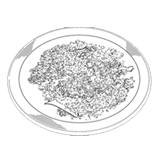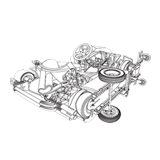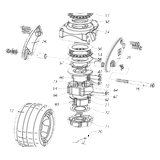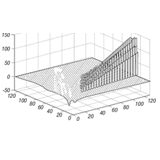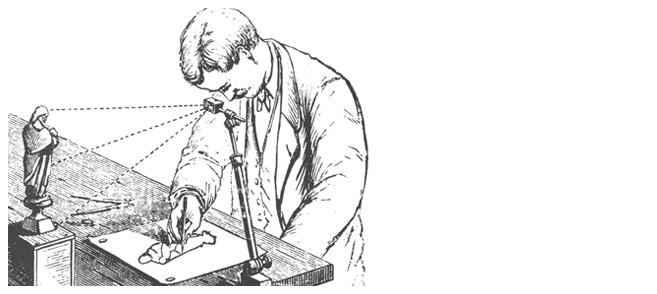When considering patents, most people think of utility patents, which are issued for an apparatus, a process, a product, or a composition of matter. An additional patent category, however, is the design patent, which can be extremely valuable under the right circumstances.
A utility patent has a detailed technical disclosure along with drawings (where appropriate) and one or more claims. The claims of a utility patent list the elements of the invention and establish the boundaries of patent coverage. The design patent, by contrast, relies primarily upon the drawings to communicate what is protected. The design patent has only one claim. This claim, rather than listing any structure or describing the design in words, generally refers to the drawings as a standard of what is protected. While utility patents may be obtained for novel, useful, and unobvious inventions, the design patent does not focus on utility; rather, it is directed toward an ornamental design of an article of commerce. The United States Patent and Trademark Office has defined the design of an object to be the visual characteristics or aspects displayed by the object.
While a design patent may be issued for a utilitarian article, such a patent may be obtained only to the extent that the ornamental features dominate the functional features. To the extent to which a design is predominately utilitarian in nature, it is not protectable by a design patent in the United States.
A design patent may be issued for ornamental configuration, surface decoration, or both. It must be issued for an article, however. It is also important that the design be repeatable. For example, in a case where a company had a unique method for applying a decorative coating to wallpaper to create a cloudy appearance, a design patent was refused. The basis for the refusal was that the design was not repeatable. Protecting all designs created by the process would have essentially protected the decorating method itself. Methods cannot be protected by design patents.
To qualify for a design patent, the subject must be new in the sense that no single, identical design exists in the prior art, it must satisfy the ornamental standards, and it must be original to the inventor or inventors seeking protection. It must also be unobvious on the basis of any previously existing design or combination of designs when viewed through the eyes of a hypothetical designer skilled in the art. Further, design patents cannot be obtained for ornamental features that are not visible when the product is in use. In general, a design patent is obtained for the aesthetically appealing features of a product. It has also been stated that the subject must be a product of aesthetic skill and artistic conception. For example, one would have difficulty obtaining a design patent for a riveting machine, as it would generally not have aesthetic appeal.
As with a utility patent, a design patent is subjected to an examination in the U.S. Patent and Trademark Office, which includes a prior-art search. The design patent has a term of 14 years from the date it is granted; a utility patent carries a 17-year term.
In many circumstances, one may obtain a design patent in addition to a utility patent for the same invention. Naturally, to do this, the standards for each patent category must be satisfied. In seeking such coverage, there are regulations against "double-patenting," which precludes the issuance of two patents for one invention.
Also, to the extent that the subject qualifies as a work of art, there may be the opportunity to obtain a copyright for the same. Further, if the design is embodied in a physical article, and also functions as a trademark, a trademark registration may be obtained.
The design patent gives the owner the right to prevent others from making, using, or selling a product that so resembles the patented product that an "ordinary observer" might purchase the infringing article, thinking it was the patented product. The ordinary observer standard was established by the U.S. Supreme Court in 1872 in a case involving an ornamental design for silverware handles. The ordinary observer is generally deemed to be the retail purchaser of goods of that particular type rather than an expert, who would be less likely to be fooled.
It is important to bear in mind that the comparison is not made on a side-by-side basis. The test involves a hypothetical ordinary observer who, being aware of the patented design, encounters for the first time the product alleged to infringe. The ordinary observer pays as much attention as one would typically use in deciding to purchase such a product. A further refinement to the test is that the comparison must be made between the two articles as they would appear in use. This, of course, would not always be the same appearance that a product would have in a carton.
The standard of infringement involves two stages. First, one must determine what ornamental features of the patented design are not shown in the prior art and whether one or more of these were appropriated by the product alleged to infringe. If not, there is no infringement. If there was appropriation of one or more of the unique features, then a second test is applied. One looks at both the similarities and differences between the two products to determine if there is sufficient overall similarity to deceive the ordinary observer. If so, infringement exists.
In summary, the prospects of obtaining a design patent should be considered when the innovative work involves a product having unique ornamental features. The possibility of obtaining other forms of intellectual property protection, in addition to the design patent, should also be considered.
Copyright © 1993 by The Minerals, Metals & Materials Society.



